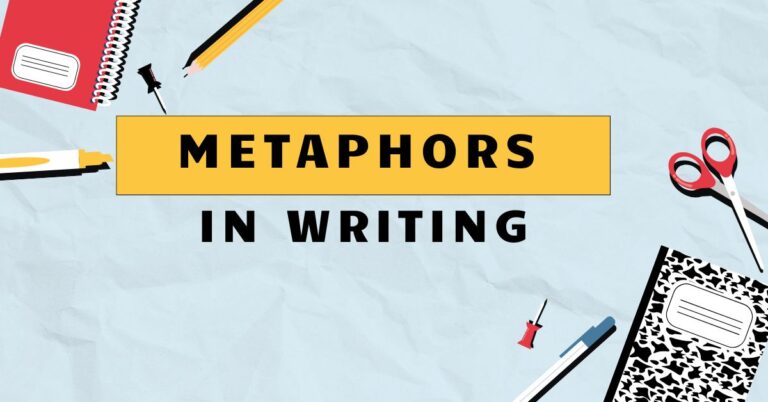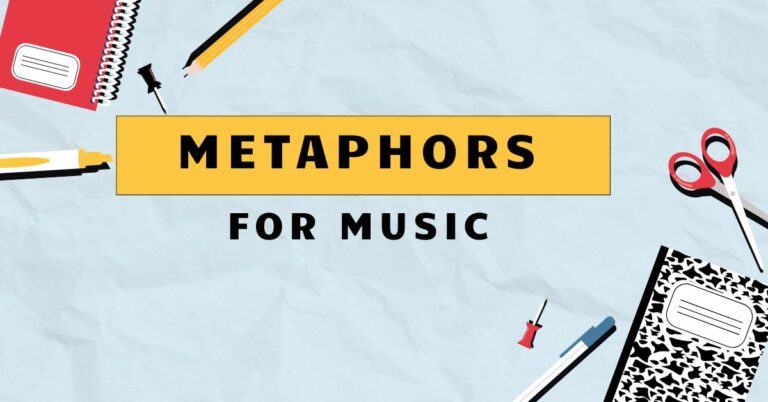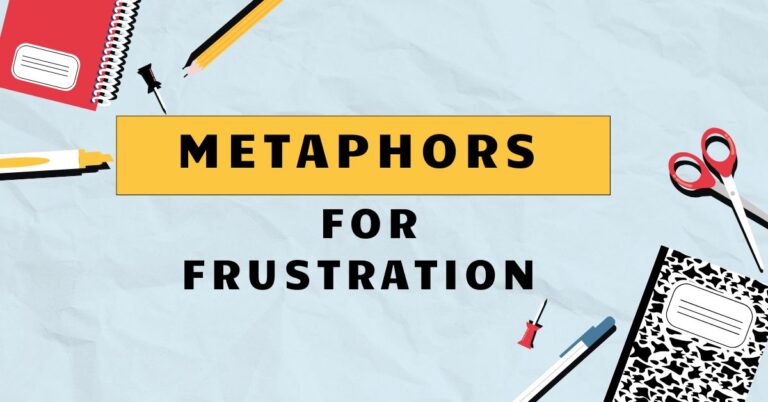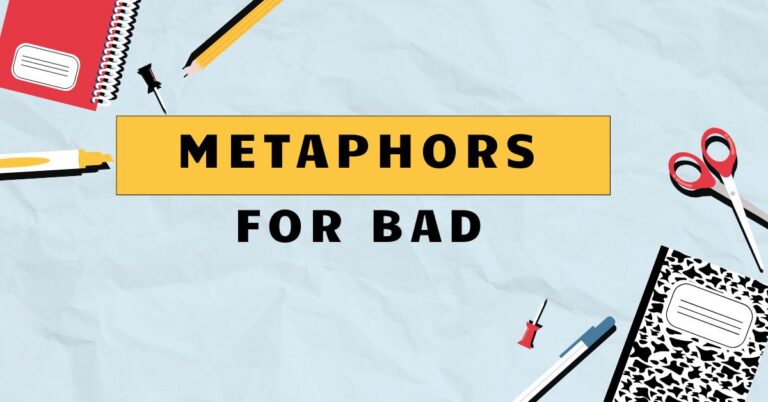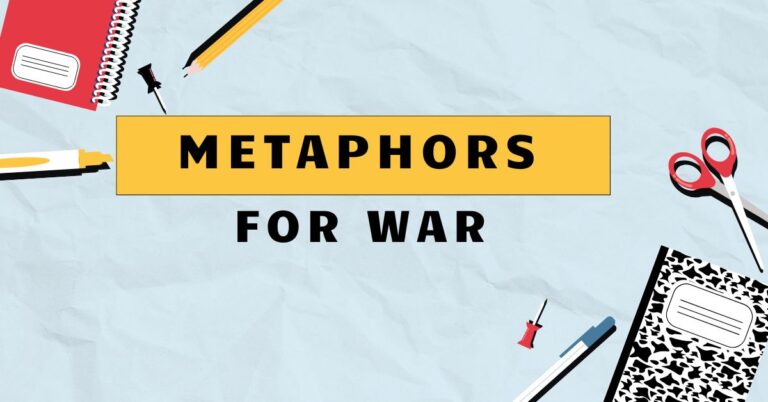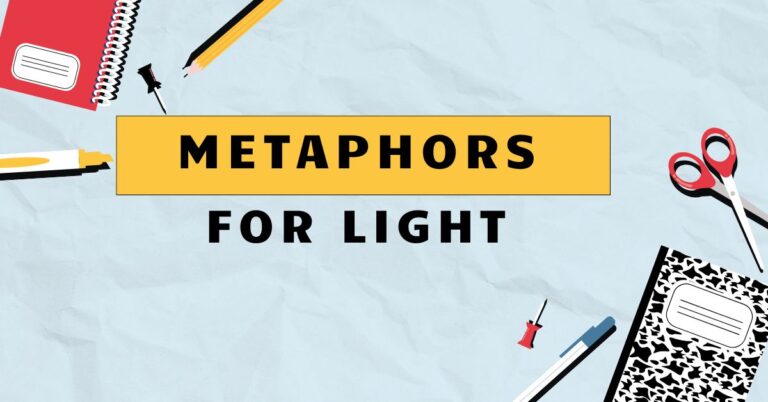33 Language as Metaphor: Exploring Figurative Expressions
Metaphors are fundamental to how we understand and communicate ideas. They allow us to transfer meaning from one domain to another, creating vivid and insightful expressions.
Understanding metaphors for language itself provides a deeper appreciation of how language functions, evolves, and shapes our thoughts. This article explores various metaphors used to describe language, their implications, and how they enrich our communication.
It will benefit students, writers, linguists, and anyone interested in the art of expression and the power of words.
Table of Contents
- Introduction
- Definition of Language Metaphors
- Structural Breakdown of Language Metaphors
- Types and Categories of Language Metaphors
- Examples of Language Metaphors
- Usage Rules for Language Metaphors
- Common Mistakes with Language Metaphors
- Practice Exercises
- Advanced Topics in Language Metaphors
- Frequently Asked Questions
- Conclusion
Definition of Language Metaphors
A language metaphor is a figure of speech that uses an image, idea, or concept from one domain to describe language or aspects of language. It suggests a similarity or analogy between the two seemingly different things, providing a new perspective on language.
These metaphors are not literal; instead, they offer a figurative understanding of language’s complex nature, its function, and its impact on communication and thought. By employing metaphors, we can make abstract concepts more concrete and relatable.
Language metaphors can be classified based on the source domain (the concept used to describe language) and the target domain (language itself). The function of these metaphors is to illuminate specific characteristics of language, such as its power, structure, or role in society.
The context in which these metaphors are used can vary widely, from academic discourse to everyday conversation, each shaping our understanding and use of language.
Structural Breakdown of Language Metaphors
The structure of a language metaphor involves two key elements: thesource domainand thetarget domain. The source domain provides the imagery or concept, while the target domain is the aspect of language being described.
The metaphor creates a link between these two domains, implying a similarity or shared characteristic.
For example, in the metaphor “Language is a bridge,” the source domain is “bridge,” and the target domain is “language.” The metaphor suggests that language, like a bridge, connects people, ideas, and cultures. The effectiveness of a metaphor depends on the strength and relevance of this connection.
The underlying pattern of a language metaphor often follows the structure “Language is X,” where X represents the source domain. However, metaphors can also be expressed through more complex sentences and phrases, such as “Words are weapons” or “Grammar is the skeleton of language.” Understanding this structural breakdown helps in identifying and interpreting language metaphors effectively.
Types and Categories of Language Metaphors
Language metaphors can be categorized based on the specific imagery or concepts they employ. Understanding these categories helps in appreciating the diverse ways language can be conceptualized.
Language as a Tool
This metaphor views language as an instrument or device used to achieve specific goals, such as communication, persuasion, or expression. It emphasizes the practical and functional aspects of language.
Language as a Vehicle
Here, language is seen as a means of transportation or conveyance, carrying ideas, thoughts, and information from one person or place to another. This highlights language’s role in facilitating understanding and connection.
Language as a Game
This metaphor portrays language as a system of rules and strategies, where speakers and writers engage in a playful or competitive interaction. It emphasizes the creative and strategic aspects of language use.
Language as a Weapon
Language can be seen as a tool for attack or defense, used to persuade, manipulate, or control others. This highlights the power and potential for harm in language.
Language as a Body
This metaphor views language as a living organism with its own anatomy, physiology, and development. It emphasizes the dynamic and evolving nature of language.
Language as Clothing
Language can be seen as a covering or adornment, shaping and presenting our thoughts and ideas to the world. This highlights the expressive and stylistic aspects of language.
Language as a Landscape
This metaphor portrays language as a vast and varied terrain, with different regions, features, and pathways. It emphasizes the richness and complexity of language.
Language as a Container
Here, language is viewed as something that holds or contains thoughts, ideas, and emotions. This emphasizes the capacity of language to encapsulate and convey meaning.
Examples of Language Metaphors
The following tables provide examples of language metaphors organized by category. These examples illustrate the diverse ways language can be conceptualized through figurative expressions.
Table 1: Language as a Tool
This table presents a series of sentences that exemplify how language is metaphorically used as a tool. Each sentence demonstrates the instrumental function of language, highlighting its ability to achieve specific goals and outcomes.
| Example | Explanation |
|---|---|
| “Words are the tools of a writer.” | Highlights the writer’s use of language to craft stories and convey ideas. |
| “Language is a hammer to shape public opinion.” | Emphasizes the power of language to influence and mold people’s beliefs. |
| “Grammar is the toolbox for effective communication.” | Presents grammar as a set of tools necessary for clear and precise expression. |
| “Vocabulary is the saw that cuts through ambiguity.” | Illustrates how a rich vocabulary helps eliminate confusion and uncertainty. |
| “A well-chosen phrase is a scalpel for precise thought.” | Shows how careful language can dissect and refine ideas with accuracy. |
| “Language is the lever that moves mountains of ignorance.” | Emphasizes the power of language to overcome obstacles and promote knowledge. |
| “Eloquence is a paintbrush that colors perception.” | Highlights how eloquent language can influence and shape how people perceive things. |
| “Rhetoric is the drill that bores into the audience’s minds.” | Illustrates the persuasive power of rhetoric to deeply affect listeners. |
| “Jargon is a wrench that tightens the bonds of a profession.” | Shows how specialized language strengthens the connections within a field. |
| “Dialect is a chisel that carves out cultural identity.” | Emphasizes how language shapes and expresses a community’s unique identity. |
| “Slang is a shortcut through formal expression.” | Illustrates how informal language can provide a quicker, more direct means of communication. |
| “Language is the glue that binds societies together.” | Emphasizes language’s role in creating cohesion and unity among people. |
| “The pen is mightier than the sword.” | Highlights the power of written language over physical force. |
| “Words are the bricks with which we build our arguments.” | Illustrates how language forms the foundation of logical reasoning. |
| “Language is the key that unlocks understanding.” | Emphasizes language’s role in facilitating comprehension and insight. |
| “A good vocabulary is a compass guiding you through complex texts.” | Shows how a strong vocabulary helps navigate and understand difficult reading material. |
| “Language is a blueprint for constructing reality.” | Highlights how language shapes our understanding and perception of the world. |
| “Effective communication is a bridge connecting different perspectives.” | Emphasizes language’s role in fostering understanding and empathy between people. |
| “Language is the loom on which we weave the fabric of society.” | Illustrates how language creates the structure and patterns of social interaction. |
| “A persuasive argument is a well-oiled machine.” | Shows how effective rhetoric functions smoothly and efficiently. |
| “Language is a net to catch ideas.” | Highlights language’s ability to capture and articulate abstract concepts. |
| “Good writing is a sharp knife, cutting through confusion.” | Emphasizes clarity and precision in effective writing. |
| “Language is a magnifying glass, enlarging small details.” | Shows how language can bring attention to subtle but important aspects. |
| “A well-crafted sentence is a sturdy shield against misinterpretation.” | Highlights how careful construction can protect against misunderstandings. |
| “Language is a ladder, helping us climb to new heights of understanding.” | Emphasizes language’s role in facilitating intellectual growth. |
Table 2: Language as a Vehicle
This table presents sentences that use the metaphor of language as a vehicle. Each example illustrates how language transports ideas, emotions, and information, facilitating communication and connection.
| Example | Explanation |
|---|---|
| “Words are the vehicles of thought.” | Highlights how language carries our ideas and concepts. |
| “Stories are the trains that transport us to new worlds.” | Emphasizes how narratives take us to different places and experiences. |
| “Language is a river flowing with ideas.” | Illustrates how language carries a continuous stream of thoughts and information. |
| “Poems are rockets carrying emotions to the stars.” | Shows how poetry can powerfully convey feelings and experiences. |
| “Conversations are journeys we take together.” | Highlights how dialogue involves a shared exploration and exchange of ideas. |
| “Language is a ship sailing on the sea of knowledge.” | Emphasizes how language helps us navigate and explore the vast realm of information. |
| “Metaphors are the wings that carry our imagination.” | Illustrates how figurative language enables creative thinking and expression. |
| “A sentence is a car transporting meaning from writer to reader.” | Shows how sentences convey ideas from one person to another. |
| “Language is a pipeline carrying information across distances.” | Emphasizes how language facilitates the transmission of data and facts. |
| “Idioms are shortcuts on the road to understanding.” | Highlights how familiar expressions can quickly convey complex ideas. |
| “The written word is a time machine, transporting us to the past.” | Illustrates how writing can connect us with historical events and figures. |
| “Language is a current carrying cultural values.” | Emphasizes language’s role in transmitting traditions and beliefs. |
| “A well-told joke is a laughter-mobile.” | Highlights how jokes deliver humor and amusement. |
| “Language is the elevator to higher levels of consciousness.” | Emphasizes language’s role in facilitating intellectual and spiritual growth. |
| “Our words are boats sailing on the ocean of conversation.” | Illustrates how we contribute to the flow of dialogue and exchange. |
| “Language is the conveyor belt of culture.” | Highlights how language continuously moves and shares cultural elements. |
| “Thoughts travel on the rails of grammar.” | Shows how grammar provides the structure for coherent thinking and expression. |
| “Language is a shuttle carrying us between different perspectives.” | Emphasizes language’s role in fostering empathy and understanding. |
| “Stories are the caravans that carry wisdom across generations.” | Illustrates how narratives transmit knowledge and insights over time. |
| “Language is the bloodstream of society, carrying vital information.” | Highlights how language sustains and connects different parts of a community. |
| “A clear explanation is a smooth ride to comprehension.” | Shows how clarity in language facilitates understanding and learning. |
| “Language is a bridge carrying us over chasms of misunderstanding.” | Emphasizes language’s role in resolving conflicts and promoting agreement. |
| “Each word is a step on the path to enlightenment.” | Illustrates how language guides us toward greater knowledge and understanding. |
| “Language is the pathway to new worlds.” | Highlights how language enables us to explore and understand different cultures and ideas. |
| “Ideas are seeds carried by the wind of language.” | Emphasizes how language spreads and disseminates new concepts and thoughts. |
Table 3: Language as a Game
This table provides examples of language being used as a game. These sentences highlight the playful, strategic, and rule-based aspects of language, emphasizing its interactive and creative dimensions.
| Example | Explanation |
|---|---|
| “Conversation is a tennis match, with each person volleying ideas.” | Highlights the back-and-forth exchange of ideas in dialogue. |
| “Debate is a chess game, with each argument a strategic move.” | Emphasizes the strategic and competitive nature of argumentation. |
| “Puns are linguistic hopscotch.” | Illustrates the playful and creative manipulation of words. |
| “Grammar is the rulebook of the language game.” | Shows how grammar provides the structure and guidelines for language use. |
| “Rhetoric is the art of playing the audience.” | Emphasizes the persuasive and manipulative aspects of language. |
| “Jokes are linguistic surprises.” | Highlights how humor involves unexpected and playful use of language. |
| “Sarcasm is a game of saying one thing and meaning another.” | Illustrates the use of language to convey hidden or ironic meanings. |
| “Negotiation is a game of linguistic poker.” | Emphasizes the strategic and deceptive aspects of bargaining. |
| “Euphemisms are the gentle players in the language game.” | Highlights how euphemisms soften or disguise harsh realities. |
| “Poetry is a playground for words.” | Illustrates the creative and experimental use of language in poetry. |
| “Storytelling is a game of make-believe.” | Emphasizes the imaginative and immersive aspects of narrative. |
| “Irony is the magician of the language game.” | Highlights how irony creates unexpected and humorous effects. |
| “Wit is a quick chess move in conversation.” | Illustrates how clever and sharp language can be used in dialogue. |
| “Double entendres are the hidden levels of the language game.” | Emphasizes the multiple meanings and interpretations of words. |
| “Language is a puzzle to decipher.” | Highlights the challenges and rewards of understanding complex communication. |
| “Each conversation is a collaborative storytelling game.” | Illustrates how dialogue involves shared creation and exchange of narratives. |
| “Metaphors are the secret codes of language.” | Emphasizes the hidden meanings and symbolic representations in language. |
| “Translation is a game of finding the matching pieces.” | Highlights the challenges and complexities of conveying meaning across languages. |
| “Persuasion is the art of moving pieces on the board of public opinion.” | Illustrates how rhetoric can influence and sway people’s beliefs. |
| “Slang is the rebel playing by their own rules.” | Emphasizes the informal and unconventional use of language. |
| “A clever argument is a checkmate in the game of debate.” | Shows how effective reasoning can win an argument. |
| “Diplomacy is a delicate dance of words.” | Highlights the careful and strategic use of language in international relations. |
| “Each sentence is a card played in the game of communication.” | Illustrates how we use language to convey information and connect with others. |
| “Language is a labyrinth of possibilities.” | Emphasizes the vast and complex nature of linguistic expression. |
| “A well-crafted narrative is a captivating game of imagination.” | Highlights how stories engage and entertain through creative language. |
Table 4: Language as a Weapon
This table presents sentences that illustrate language as a weapon. These examples highlight the potential for language to inflict harm, manipulate, or control, emphasizing its power in conflict and persuasion.
| Example | Explanation |
|---|---|
| “Words can be swords that cut deep.” | Highlights the potential of language to cause emotional pain. |
| “Gossip is a poison that spreads through the community.” | Emphasizes the destructive nature of rumors and slander. |
| “Propaganda is a weapon of mass deception.” | Illustrates how language can be used to manipulate public opinion. |
| “Insults are verbal bullets.” | Shows how offensive language can be used to attack and demean. |
| “Lies are traps set with words.” | Emphasizes the deceptive and harmful nature of falsehoods. |
| “Criticism can be a hammer that shatters confidence.” | Highlights how negative feedback can damage self-esteem. |
| “Rhetoric can be used to incite hatred.” | Illustrates how persuasive language can fuel animosity and conflict. |
| “Sarcasm is a veiled dagger.” | Emphasizes the subtle yet cutting nature of sarcastic remarks. |
| “Threats are verbal grenades.” | Shows how language can be used to intimidate and coerce. |
| “Accusations are arrows aimed at reputation.” | Highlights how allegations can damage someone’s public image. |
| “Silence can be a weapon, withholding comfort or information.” | Emphasizes how the absence of language can be used to exert control. |
| “Double-speak is a smokescreen hiding the truth.” | Illustrates how evasive language can obscure reality. |
| “Verbal abuse is a form of assault.” | Shows how harmful language can cause emotional and psychological damage. |
| “Rumors are viruses infecting the social fabric.” | Emphasizes how gossip can spread and undermine relationships. |
| “Manipulation is a game of linguistic chess.” | Illustrates how strategic language can be used to control others. |
| “Deception is a cloak woven from lies.” | Highlights how falsehoods can conceal the truth. |
| “Innuendo is a subtle poison.” | Emphasizes how indirect suggestions can be harmful. |
| “Spin is a way to weaponize the truth.” | Illustrates how language can be used to distort reality. |
| “Propaganda is a barrage of misinformation.” | Shows how biased language can overwhelm and mislead. |
| “Hate speech is a fire that consumes communities.” | Emphasizes the destructive impact of discriminatory language. |
| “Gaslighting is a psychological weapon.” | Illustrates how manipulative language can distort someone’s perception of reality. |
| “A sharp tongue can be more dangerous than a sword.” | Highlights the power of words to inflict harm. |
| “Language is a tool that can build up or tear down.” | Emphasizes the dual nature of language as both constructive and destructive. |
| “Words are stones that can break bones.” | Highlights the physical and emotional impact of harmful language. |
| “A carefully crafted lie can be a deadly weapon.” | Illustrates how deceptive language can have severe consequences. |
Table 5: Language as a Body
This table contains examples of language being described as a body. These metaphors highlight the organic, evolving, and interconnected aspects of language, emphasizing its structure and vitality.
| Example | Explanation |
|---|---|
| “Grammar is the skeleton of language.” | Highlights the structural framework that supports language. |
| “Vocabulary is the heart of language.” | Emphasizes the vital role of words in conveying meaning. |
| “Pronunciation is the voice of language.” | Illustrates how speech gives language its audible form. |
| “Idioms are the muscles of language.” | Shows how expressions add strength and flexibility to communication. |
| “Syntax is the nervous system of language.” | Emphasizes how sentence structure coordinates and connects ideas. |
| “Etymology is the DNA of language.” | Highlights how word origins encode the history and evolution of language. |
| “Dialects are the different organs of language.” | Illustrates the diverse and specialized forms of language. |
| “Slang is the blood of language, constantly renewing it.” | Emphasizes how informal language revitalizes and rejuvenates communication. |
| “A living language is constantly evolving and changing.” | Shows how language adapts and grows over time. |
| “Language is a breathing, living entity.” | Highlights the dynamic and organic nature of language. |
| “Each word is a cell in the body of language.” | Illustrates how individual components contribute to the whole. |
| “Literature is the soul of a language.” | Emphasizes the creative and expressive heart of language. |
| “A dead language is a body without breath.” | Shows how the absence of use leads to the demise of language. |
| “The tongue is the muscle that shapes language.” | Highlights the physical act of speaking. |
| “New words are like newborn babies, bringing new life to the language.” | Illustrates how innovation keeps language vital. |
| “A healthy language is one that is constantly growing and adapting.” | Emphasizes the importance of evolution in language. |
| “Foreign words are like transplants, enriching the language.” | Shows how borrowing from other languages enhances vocabulary. |
| “Grammatical errors are wounds on the body of language.” | Highlights the importance of accuracy in communication. |
| “Language is the lifeblood of culture.” | Emphasizes the vital role of language in preserving and transmitting cultural values. |
| “Each sentence is a breath of thought.” | Illustrates how language conveys ideas and meanings. |
| “A rich vocabulary is a sign of a healthy language.” | Shows how a wide range of words contributes to effective communication. |
| “Language is the collective memory of a people.” | Emphasizes the role of language in preserving history and tradition. |
| “A fluent speaker has a nimble tongue.” | Highlights the ease and grace of articulate communication. |
| “Language is the voice of civilization.” | Emphasizes the role of language in human progress. |
| “The brain is the control center of language.” | Illustrates the cognitive processes involved in language use. |
Usage Rules for Language Metaphors
Using language metaphors effectively requires careful consideration of context, audience, and purpose. Here are some guidelines:
- Relevance: Choose metaphors that are relevant to the topic and audience. The connection between the source and target domains should be clear and meaningful.
- Originality: Strive for originality to create a fresh and impactful image. Overused metaphors can become clichés and lose their effectiveness.
- Consistency: Maintain consistency within a metaphor. Avoid mixing metaphors that create conflicting or confusing images.
- Clarity: Ensure that the metaphor enhances understanding rather than obscuring it. The meaning should be readily accessible to the audience.
- Appropriateness: Consider the tone and style of the communication. Metaphors should be appropriate for the context and avoid being overly dramatic or distracting.
There are exceptions to these rules, particularly in creative writing, where unconventional or experimental metaphors can be used for artistic effect. However, in most cases, adhering to these guidelines will help ensure that language metaphors are used effectively and enhance communication.
Common Mistakes with Language Metaphors
One common mistake is using mixed metaphors, where two or more inconsistent metaphors are combined, creating a confusing or nonsensical image. For example:
Incorrect: “We need to nip it in the bud before it snowballs out of the park.”
Correct: “We need to nip it in the bud before it becomes a bigger problem.”
Another mistake is using clichéd metaphors, which are overused and lack originality. For example:
Incorrect: “Language is a double-edged sword.”
Correct: “Language can be a precise instrument, capable of both creation and destruction, depending on the wielder’s intent.”
A further mistake is using metaphors that are culturally insensitive or inappropriate for the audience. It’s essential to consider cultural context and avoid metaphors that may be offensive or misunderstood.
Practice Exercises
Test your understanding of language metaphors with the following exercises.
Exercise 1: Identifying Language Metaphors
Identify the language metaphor in each sentence and explain its meaning.
| Question | Answer |
|---|---|
| 1. “Grammar is the backbone of effective writing.” | Grammar is the structure that supports writing. |
| 2. “Words are the building blocks of communication.” | Words are the fundamental units used to construct messages. |
| 3. “Language is a river that flows through time.” | Language changes and evolves continuously. |
| 4. “Sarcasm is a knife that cuts with humor.” | Sarcasm can be used to make cutting remarks in a humorous way. |
| 5. “Jargon is a fence that keeps outsiders from understanding.” | Specialized language can exclude those unfamiliar with it. |
| 6. “Language is a map that guides us through understanding.” | Language helps us navigate and comprehend complex ideas. |
| 7. “Euphemisms are bandages that soften harsh realities.” | Euphemisms make unpleasant topics more palatable. |
| 8. “Language is a mirror reflecting our thoughts and emotions.” | Language reveals our inner selves. |
| 9. “Conversations are dances where we lead and follow.” | Dialogue involves a reciprocal exchange of ideas. |
| 10. “Language is a tool that shapes our world.” | Language influences our perception and understanding of reality. |
Exercise 2: Creating Language Metaphors
Create a language metaphor for each of the following concepts:
| Concept | Possible Metaphor |
|---|---|
| 1. Vocabulary | Vocabulary is the garden of language, where words bloom and flourish. |
| 2. Communication | Communication is a bridge that connects different minds. |
| 3. Writing | Writing is a canvas where we paint our thoughts with words. |
| 4. Listening | Listening is a window into another person’s soul. |
| 5. Translation | Translation is a key that unlocks the meaning of a foreign text. |
| 6. Grammar Errors | Grammar errors are potholes on the road of clear communication. |
| 7. Dialogue | Dialogue is a conversation between two souls. |
| 8. Eloquence | Eloquence is a silver tongue that captivates the audience. |
| 9. Persuasion | Persuasion is a magnet that attracts others to your point of view. |
| 10. Clarity | Clarity is a lens that brings ideas into sharp focus. |
Exercise 3: Correcting Mixed Metaphors
Rewrite the following sentences to correct the mixed metaphors:
| Question | Answer |
|---|---|
| 1. “We need to grab the bull by the horns before it gets out of hand.” | We need to address the problem directly before it escalates. |
| 2. “Let’s cut to the chase and nail down the bottom line.” | Let’s get straight to the point and determine the essential facts. |
| 3. “That idea is a long shot, but we should still plant the seed.” | That idea is unlikely to succeed, but we should still explore it. |
| 4. “We have to stay ahead of the curve and keep our eye on the ball.” | We have to remain innovative and focused on our goals. |
| 5. “The project is a marathon, not a sprint, so let’s hit the ground running.” | The project requires sustained effort, so let’s start with a strong plan. |
| 6. “We need to think outside the box and climb the corporate ladder.” | We need to be innovative and pursue career advancement. |
7. “Let’s keep
Advanced Topics in Language MetaphorsDelving deeper into language metaphors involves exploring their cognitive and cultural dimensions. Cognitive linguistics examines how metaphors shape our thought processes, influencing how we understand abstract concepts. Conceptual Metaphor Theory, for instance, posits that metaphors are not merely linguistic devices but fundamental cognitive structures that organize our understanding of the world. Culturally, language metaphors reflect the values, beliefs, and experiences of a particular society. Different cultures may employ different metaphors to describe language, reflecting their unique perspectives and priorities. Studying these cultural variations provides insights into the relationship between language, culture, and cognition. Additionally, the study of language metaphors intersects with fields such as rhetoric, literary theory, and communication studies. Rhetoricians analyze how metaphors are used to persuade and influence audiences, while literary theorists explore the role of metaphors in creating meaning and aesthetic effect. Communication scholars examine how metaphors shape interpersonal interactions and public discourse. Frequently Asked QuestionsWhat is the difference between a metaphor and a simile?A metaphor directly equates two things, while a simile uses “like” or “as” to make a comparison. For example, “Language is a bridge” (metaphor) versus “Language is like a bridge” (simile). Why are metaphors important in language?Metaphors enhance understanding, make abstract concepts more concrete, and add vividness to communication. They also reveal underlying cognitive structures and cultural values. How can I improve my use of language metaphors?Practice identifying and analyzing metaphors in various contexts, experiment with creating your own metaphors, and seek feedback from others on their effectiveness. Are some metaphors universally understood?While some metaphors may be widely recognized due to shared human experiences, many metaphors are culturally specific and may not be universally understood. What role do metaphors play in learning a new language?Metaphors can aid in language learning by connecting new concepts to familiar ones, making them easier to understand and remember. ConclusionMetaphors for language offer a rich and insightful way to understand the complexities of communication. By viewing language through different lenses—as a tool, a vehicle, a game, or a weapon—we gain a deeper appreciation of its multifaceted nature. Understanding and using language metaphors effectively can enhance our communication skills, enrich our creative expression, and broaden our cognitive horizons. As we continue to explore the power of words, let us embrace the metaphors that illuminate the path to greater understanding and connection. |


